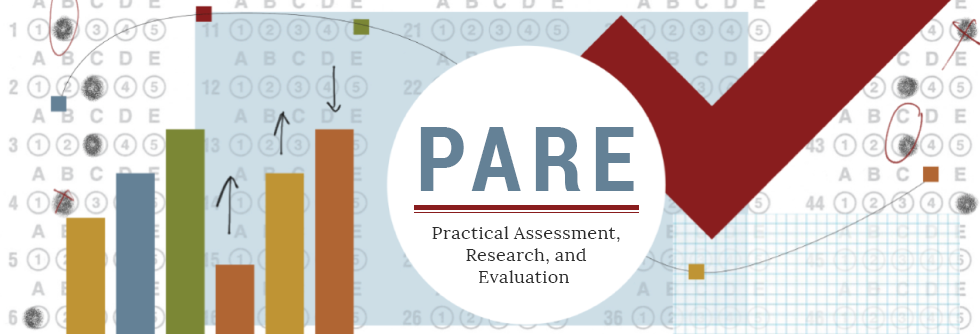Assessing unidimensionality: A comparison of Rasch Modeling, Parallel Analysis, and TETRAD
DOI
https://doi.org/10.7275/q7g0-vt50
Abstract
The evaluation of assessment dimensionality is a necessary stage in the gathering of evidence to support the validity of interpretations based on a total score, particularly when assessment development and analysis are conducted within an item response theory (IRT) framework. In this study, we employ polytomous item responses to compare two methods that have received increased attention in recent years (Rasch model and Parallel analysis) with a method for evaluating assessment structure that is less well-known in the educational measurement community (TETRAD). The three methods were all found to be reasonably effective. Parallel Analysis successfully identified the correct number of factors and while the Rasch approach did not show the item misfit that would indicate deviation from clear unidimensionality, the pattern of residuals did seem to indicate the presence of correlated, yet distinct, factors. TETRAD successfully confirmed one dimension in the single-construct data set and was able to confirm two dimensions in the combined data set, yet excluded one item from each cluster, for no obvious reasons. The outcomes of all three approaches substantiate the conviction that the assessment of dimensionality requires a good deal of judgment. Accessed 19,548 times on https://pareonline.net from October 08, 2007 to December 31, 2019. For downloads from January 1, 2020 forward, please click on the PlumX Metrics link to the right.
Creative Commons License

This work is licensed under a Creative Commons Attribution-NonCommercial-No Derivative Works 4.0 International License.
Recommended Citation
Yu, Chong Ho; Osborn-Popp, Sharon; DiGangi, Samuel; and Jannasch-Pennell, Angel
(2019)
"Assessing unidimensionality: A comparison of Rasch Modeling, Parallel Analysis, and TETRAD,"
Practical Assessment, Research, and Evaluation: Vol. 12, Article 14.
DOI: https://doi.org/10.7275/q7g0-vt50
Available at:
https://scholarworks.umass.edu/pare/vol12/iss1/14
